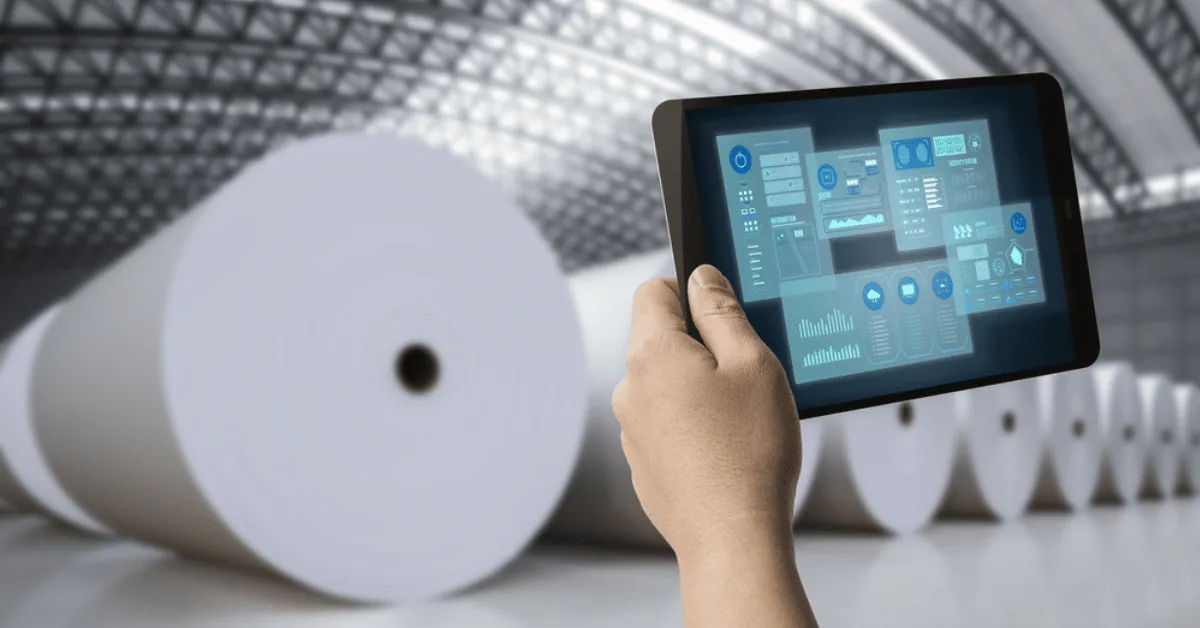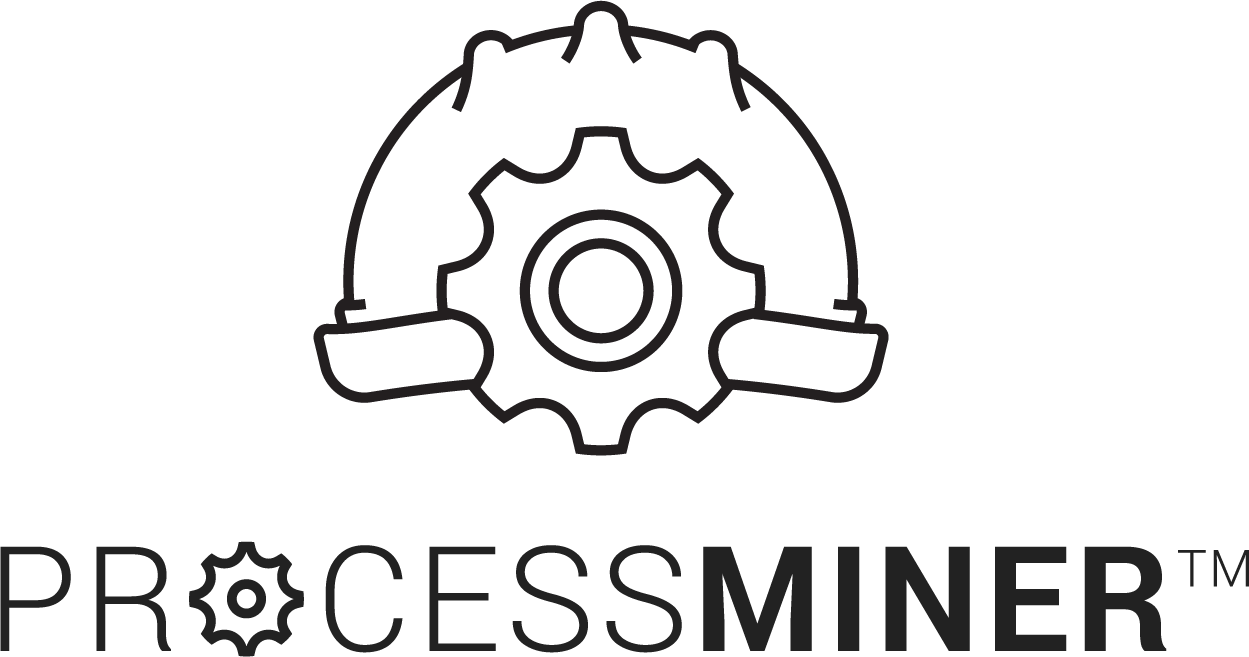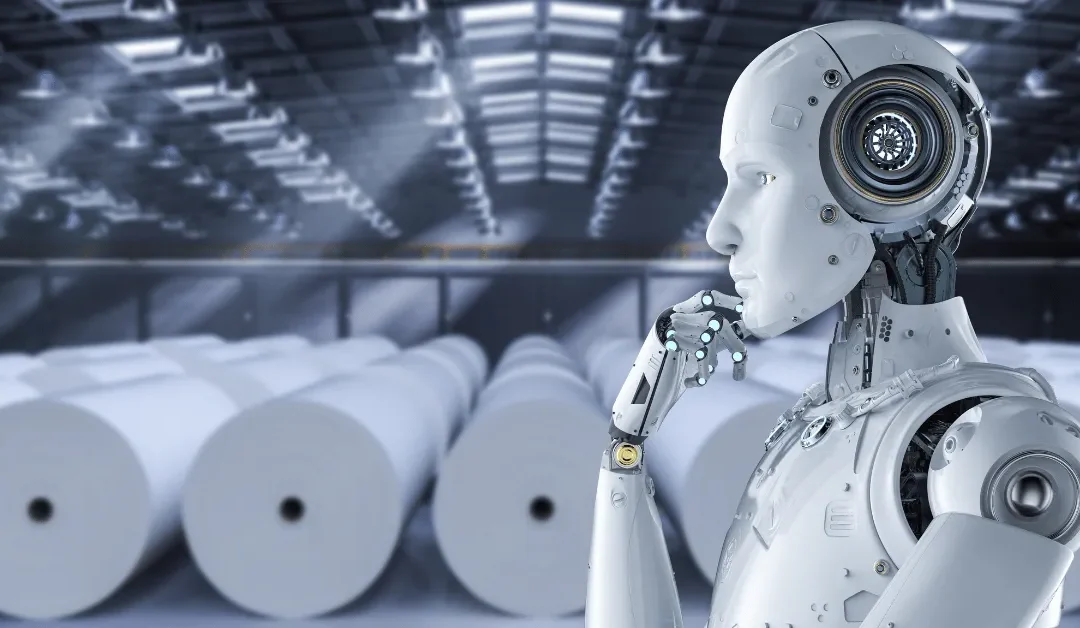Today, pulp and paper manufacturers are under immense pressure to improve efficiency and cut costs. One way they address these challenges is by turning to AI-driven autonomous optimization.
AI-driven autonomous optimization can help paper and tissue manufacturers improve efficiency in a number of ways. For example, it can help identify and correct process anomalies in real time, optimize production schedules, and predict equipment failures before they happen. In addition, by automating key processes, paper manufacturers can immediately achieve cost savings.

That said, there are both benefits and challenges when it comes to AI-driven autonomous chemistry optimization for papermaking. In this blog post, we’ll explore both sides of the coin. At the end of the day, despite challenges, AI-driven autonomous chemistry optimization systems have come a long way and are here to stay for good.
It’s important for papermakers to understand how this technology works so that they can take on the challenge and get ahead of their competitors.
Benefits of AI-Driven Autonomous Optimization for Papermakers
As we mentioned, there are several benefits associated with AI-driven autonomous optimization for papermakers. Here are just a few of the ways that this technology can help your business:
- Improved Efficiency: One of the main benefits of AI-driven autonomous optimization is improved efficiency. This technology can help identify and correct process anomalies in real time, optimize production schedules, and predict equipment failures before they happen. In addition, by automating key processes, paper manufacturers can immediately achieve cost savings.
- Higher Quality Products: Thanks to the improved accuracy and consistency made possible by AI-driven autonomous optimization, businesses that implement this technology often see an increase in the quality of their products. This leads to happier customers and repeat business.
- Reduced Waste: With AI-driven autonomous optimization managing your production process, you can rest assured that your company produces only the highest quality products. This helps reduce waste and keep costs down.
- Cost Savings: By utilizing AI-powered autonomous chemistry optimization to accurately monitor and control everything from raw material consistency to pH levels of bleaching baths, it’s easier than ever to adapt effects in the process to meet desired outputs. As a result, papermakers are able to reduce costs with improved automation accuracy and maintain better quality control.
Moreover, AI-driven autonomous chemistry optimization offers additional benefits, such as faster response times relative to traditional chemistry approaches, enhanced insight into operating process dynamics to allow for optimization, and improved energy conservation through proper monitoring of chemical usage. All of this contributes significantly to cost savings for papermakers looking for efficient solutions in their production processes.
Over a six-month period utilizing autonomous optimization, mills are realizing a 25% reduction in wet strength chemistry usage.
Challenges of AI-Driven Autonomous Optimization for Papermakers
While there are many benefits associated with AI-driven autonomous optimization for papermaking, there are challenges that businesses should be aware of before implementing this technology.
Here are potential challenges you may face:
- High Upfront Costs: One of the biggest challenges associated with AI-driven autonomous optimization is the high upfront costs. This technology requires expensive hardware and software as well as skilled personnel to operate it effectively.
- Complex Implementation Process: Another challenge related to AI-driven autonomous optimization is that the implementation process can be complex. This technology requires careful planning and execution to be effective. Failure to adequately implement AI-driven autonomous optimization could lead to disruptions in your production process and decreased efficiency overall.
To avoid these challenges, working with a reputable provider like ProcessMiner ensures an easier experience implementing this type of technology.
ProcessMiner’s AI-enabled platform is designed to deliver process improvement recommendations and optimal control parameters in real-time so you can achieve better efficiency on your pulp and paper production line.
The predictive machine learning systems will provide autonomous proactive guidance through our online system for reducing costs typically seen at manufacturing facilities across the board – from saving money by scrap reduction or improved quality control outcomes as well!

Smart Manufacturing and Autonomous Optimization for Pulp and Paper Manufacturing
Critical to optimizing the performance of plant operations and reducing quality variations in pulp and paper manufacturing is proactive and accurate process control. Smart technology is being adopted by the pulp, paper, and packaging industries; this digital transformation in manufacturing reduces the consumption of raw materials and process variability, drives down costs, increases throughput, and gains a competitive edge with customers.

